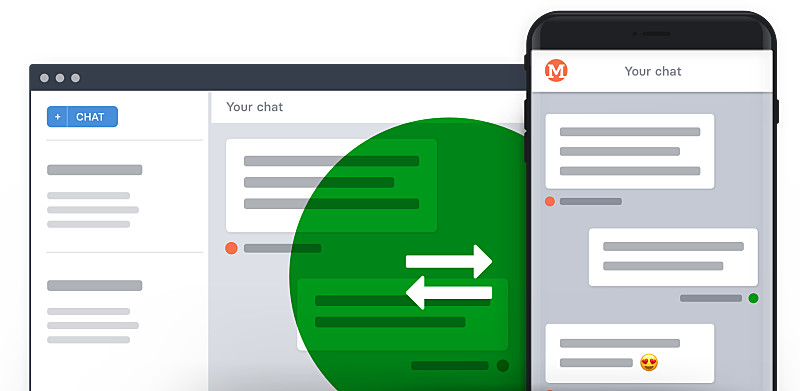
After Steve Jobs presented the iPad 2010, publishers started investing heavily into apps, innovative ideas and new technology. It was “Peak News App”. With my agency clapp we have developed numerous premium news apps, mobile websites or news portals for major publishers over the last ten years. So it’s fair to say that I deal with mobile publishing products since the early days.
After some years the party was over and most ambitious projects were killed (or at least scaled down heavily). Many publishers focussed on investments in web based products and services again treating their existing apps either as side projects or not developing an app presence at all. The responsive web made everybody feel as if mobile distribution was covered.
When everything was about marketable reach, in most cases native apps didn´t add enough value from an economic point of view that focussed on the next financial statement. There seemed to be no scalable business model back then, especially considering the often underestimated costs and efforts for developing complex apps for two new software platforms, iOS and Android. Paying for content was the exception and often difficult from a user point of view. At least for publishers the app stores were not the solution to that problem, they were a big disappointment.
The Lost Years
Instead many publishers followed user´s eyeballs. They focused on maximizing social media traffic helping Facebook to become the biggest social network. Everybody went crazy about “Likes”, “Followers” or “Fans”. BuzzFeed was destined to be the next media giant.
Technically that felt much easier and returns showed faster. Too late the publishing and media industry understood that Facebook eventually was a competitor when it comes to advertising dollars, data and the direct user relationship. From those platforms point of view publishers were just intermediates from old days.
“The best way to think of the web as a direct-to-customer distribution channel, whether its for information or commerce. It bypasses all middlemen.”
Steve Jobs, Interview in WIRED 1996
But it´s obvious that the days of Facebook as the key middlemen with it´s news feed are counted, just as the belief of publishers and media houses that digital advertising and reach based on social media traffic can save their future. Social Media platforms are under pressure from regulation and users that, tired of hate speech and fake news, start to move on to closed user groups, chats or communities for communication and information.
Assuming there is a – for some maybe “the last” – window of opportunity as media consumption on social networks is decreasing and big tech players being under growing public scrutiny, the question is: what does it need for publishers and media companies to succeed in that new market environment?! If we agree that we need to invest into own property again, how should these products look like this time?
Emily Bell, Director at the Tow Center for Digital Journalism at Columbia Journalism School
Times are about to change also in media business itself. There´s is probably no publishing house big or small that is not investing into paid content, that is not building new product management teams with a focus on paying subscribers and not advertisers. Startups that connect creators and writers with users and combine it with simple payment models like Substack raise serious financing. The hope is that subscriptions or membership models (where users pay to support the project by choice) can be a growing part of a diversified revenue portfolio that doesn’t rely on advertising alone (or not at all). A strategy back to the roots: back to the direct customer relationship without any intermediates.
About to make a comeback
Newsrooms start judging articles based on the number of user they convert. Editorial strategies refocus on quality. Reach alone is not the most important metric any longer. New teams start to take care about the reader and not just the maximum amount of awareness.
But more and more publishers find that making users sign up to a first free tier is one thing. In a world where we all expect that cancellation is possible on a monthly basis with just a few clicks, keeping users in reasonable priced tiers is much more difficult. Eventually churn management is and always was a key challenge for digital paid products. If your churn rate too high, your product is probably just not good enough.

After publishers have updated their web proposition technically, visually and operationally, converting users to paid products will soon become a marketing and communication topic. But making their product propositions more valuable and more relevant for the user will be the major battleground of the future. Nobody can compensate a high churn rate with great marketing in the long run. Publishers can scale down costs to a certain point, but the quality of the product proposition will determine future economic potentials.
And this is exactly where the discussion about native apps suddenly is heating up again. Mobile is by far the biggest computing platform of our time and smartphones are the most successful devices ever made. It´s the platform where you meet potential users and serve existing subscribers. If you don´t succeed on mobile, it seems difficult to sustain a healthy business for media and content providers.
Why invest in mobile apps?
Ultimately as it appears significant investments in own branded native apps are still seen critical – whether it is about development, marketing or editorial resources. Apart from the popular argument “We have tried and it turned out that apps just don´t work” there are some other objections that put up a good fight. But if you stop arguing from past fails and look at some of todays facts and figures, it´s difficult to keep up such prejudice.
If most users are so tired of downloading or trying new apps, how can you explain a phenomenon like “Face App”?! As a matter of fact the overall number of total app downloads still grows year by year: from 2016 to 2018 downloads are up by 35% (see here).
If users don´t like apps anymore, why do numbers show that users spend more time in apps every year? In the US this year it is expected that mobile will surpass TV as the medium attracting the most minutes (see here).
If users are happy with the mobile web, why do they spend 90% of their mobile time in native apps – and not in the preinstalled web browser? (see here) In fact time spent in-app grew 50% from 2016 to 2018! (see here)
If native apps for news and media are not the right thing to invest in, why do practically all scalable, successful news and entertainment brands from the New York Times to the Washington Post, from Spotify to Netflix see most of their subscribers using their native apps?
The “killer argument” often comes at the end of a discussion: Compared to the returns it´s simply too risky, complicated and expensive to develop your own native premium apps. That might be the most dangerous point of view as it shows a strategic fallacy, refusal to invest in the future. Just do a bit of benchmarking: Compare the mobile market share with the budget that most publishing and media houses assign to that channel and the dilemma becomes obvious: While usually at least 60-70% usage is mobile, budgets assigned to a great mobile experience are often not even a few percent of the total budget that is invested in the whole user proposition! In most publishing house that have a total staff of several hundred people, the mobile team is often not five people strong.
“What’s really important right now is to get the mobile architecture right. Mobile will ultimately be the way you provision most of your services. The way I like to put it is, the answer should always be mobile first. You should always put your best team and your best app on your mobile app.”
Eric Schmidt, Google in 2010
While tech giants like Google started a “mobile first” philosophy in the early days of the iPhone, the media and content industry often thinks that responsive websites already form the perfect mobile strategy. With the move towards direct customer relationship business, it becomes obvious that this will not be enough to succeed. If “mobile first” just means that editorial teams check performance of an article in mobile channels, you haven´t fully understood the impact of mobile.
Especially as there comes another serious challenge with the move towards paid content: Paying customers have higher expectations. And if those expectations are not met on the mobile device of their choice, they will likely move on and spend their money somewhere else.

Wanted: Thinking out of the box
When it comes to traditional news apps the question what a user can do with it, is still stuck in the early days being mostly an extension of the website and its news feeds. Users can read the news, great. Maybe they can customise their news feed by choosing a topic or a region, but it´s basically the same content with the same structure you can find on the website. That´s it.
What might be a sufficient strategy for some international publishers that can address a worldwide audience with enough unique quality content, the vast majority of publishers will not be able to scale content and brand in such a way. Their potential target group is and always will be a community that is united by a specific language, topic, interest and location. They all face the dilemma, that there is simply no scarcity of content and news – often even within their niche! The mighty Jeff Jarvis describes it very well in this Medium post.
To understand what it needs to serve your community and succeed on mobile, it´s never a bad idea to take a closer look at Facebook. Facebook is (or maybe we should say “was”) basically a news app with community features on top. The term “social media” is an expression of that. When the news feed with its smart personalisation was introduced in 2006 it soon became the key to the platforms mobile proposition. It shaped the way users in many western countries consume content on mobile and also what they expect from a premium mobile app.
But the good news for publishers: the time of the news feed powered by algorithms seems to come to an end. The idea of social media platforms that enable everybody to do anything is under pressure and Facebook, Twitter&Co. are in trouble controlling the content that its users generate. Hate speech and fake news have arrived in the middle of politics and currently nobody knows what regulation will bring. Facebook’s attempt to give human curation another chance is poised to make the discussion about filter bias probably just more evident (read more here).
Publishers and creators shouldn´t follow Facebook´s money that they offer to them. The media industry should be encouraged to invest in own mobile products and services in order to attack in a changing mobile landscape.
It´s time to start thinking out of the box, focussing not only on your standard news and content portfolio with the usual feature set, but to rethink mobile from a users point of view – with news and content at its heart.
Asking the right questions
In his book, “The Inevitable” Kevin Kelly underlines the importance of questions. He believes “a good question is not concerned with a correct answer. A good question cannot be answered immediately. Instead a good question creates new territory of thinking and it reframes its own answers.
Without any doubt there are more than enough questions when you think of the questions around mobile product propositions. Here are some of the most vital ones I can think of:
How can your mobile app become a service that adds unique value to your product proposition on top of your existing digital channels?
Lets just stop making native apps for the sake of making apps. If your mobile app is not adding something new and unique, if it just represents your news portals content in a different way, then you can probably really just save the time and money. So let´s be honest about the real added value for your target group. What can your users do with it?! Mobile is about empowering users. User love apps because they enable them to do new things, because they make daily life easier and existing tasks much more efficient. Millions of users love to make photos and share them with others around the globe. Apps let users connect with each others in real time, sharing ideas, emotions and feedback.
What does “mobile first” mean from a content point of view?!
The main focus of most publishers is to produce “need-to-know” articles, cause this often is how their websites work (and its basically how newspapers and magazines work). But Facebook, Instagram&Co. established a new world of micro content, that users scroll through in their news feed several times a day. A recent RISJ study found that especially young audiences are also interested in what is useful to know, what is interesting to know, and what is fun to know. Mobile content needs to empower users not just from a functional, but also from an editorial point of view.
Fun fact: publishers and advertisers produce such content for Facebook, Twitter&Co. – but their own mobile offerings still just consist of teasers of traditional articles. So why not mix these two worlds in a creative new way within your own mobile app? It´s obvious that mobile apps have reshaped ways and formats of media consumption, so rethinking your mobile product should start with rethinking the content formats you are using. With the “Story” format (which was originally introduced by Snapchat) a new content portrait format is currently emerging. So question is: if users obviously get hooked up to these kind of mobile first formats, why can´t publishers try to implement these formats also into their own mobile products?
How can you let users contribute via your own mobile app in an easy way?! At least selected ones? Why not let your news app become a platform for everything that is relevant for your target group – and not just your own content?
Users love to share and comment content on their smartphone if you make it easy for them, so why not use this more efficiently for content production and sourcing? Especially if you combine that with editorial context, quality control and filtering, which is exactly what is missing on social media today. Why not use your own mobile app to identify, support and collaborate with the best amateur editors and bloggers? Rethinking mobile in small communities needs to tear down the walls between editors and readers, between the ones who want to contribute content because they would like to and the ones that earn a living from editorial work. I know this is a sensitive issue today, but maybe editorial teams should see themselves also as curators? It could open a lot of opportunities in a world where there is too much content anyway. Users look for one place where they can find all relevant content, they don´t care so much who has produced it originally (which is exactly the business of platforms like Facebook). Publishers should mix content creation and curation in an efficient, cost saving way.

How can you add real time conversations to your product to benefit from the discussion that happens around news every day?
Just like the combination of mobile and social media has disrupted traditional media, real time chat apps have revolutionized the way we communicate. Many belief that WhatsApp will be bigger than Facebook and Instagram one day. In China WeChat is leading the way and you can expect Facebook to follow that route. Today publishers provide the content, but engagement around content happens on those chat platforms where few players monetize it successfully. Instead of triggering conversations, publishers should host conversations on mobile platforms. Like townhall meetings, where decision makers, editors and readers come together. Mobile provides all the necessary means and patterns. And the editorial control can add exclusive value to it, which no chat platform would be able to. In the future users might pay not just for reading content, but for being part of a community of interest that gathers around conversations. Mobile news apps need to become the technical platforms that aggregate both – content and conversation.
How can your mobile app support and strengthen other business you have diversified into?
Driven by the realization that solely ad-funded models won’t work, a lot of publishers focus on diversified revenue models, made up of a combination of advertising, ecommerce, events and subscriptions. Your own mobile apps should support all these activities, not just necessarily subscriptions or advertising. Especially events and conferences are a growth segment where mobile is a perfect accelerator. So why not think your mobile proposition as something that bridges real and digital life?! The questions above from user generated content to real time chats work perfectly with events and conferences. Why not let mobile become a platform that supports also that?
Summary
The behemoth called Facebook is struggling, at least a bit. The window of opportunity is open. But publishers need to think out of their boxes now! Especially when it comes to mobile. It´s time to think beyond the traditional digital news business that just presents endless amounts of content and news in a never ending stream protected by a paywall. Content providers need to embrace the standards that todays social networks have established without becoming a social network themselves, avoiding the mistakes and problems current platforms face.
The mighty Jeff Jarvis is right: Content is a commodity. Information is a commodity. The unique value of journalism lies in the conversation.
“Journalism exists to be of service to the public conversation.”
Jeff Jarvis, January 2019
Quite obviously that conversation happens on other platforms that have created a wealthy business on top of it. So journalists and publishers, creators and content producers need to bring that conversation back to their own estates. They need to develop mobile platforms that empower users to create substantial value from content and conversations, cause mobile is the key battleground of todays attention economy.
Publishing needs to turn into a platform, a service that hosts conversation around content, news and knowledge in a way that is superior to the way social media works today. News platforms of the future need to be mobile first, empowering users with features that are more than bookmarking, article commenting or maybe the option to choose regional news. Instead users need to be enabled to contribute in the way news are being curated, delivered and understood.
Do we know exactly how this could work? And do we know the answers to all these questions above?
No!
But do we think that it´s just the right time to start investing, experimenting and testing?
Definitely: Yes!
Check our platform tchop.io and get in touch if you´re interested!